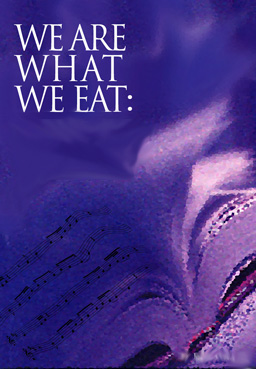| |
Of What
Do We Sing?
The Role
of Music in
Liturgy
_______________________________
Lumen Gentium,
“The Church in the Modern World,”
Though not characterized as a Liturgical Document, Lumen Gentium, “The Church in the Modern World,” offered a such dramatic revisioning of how humanity fits into the scheme of Creation that its insights clearly impact both the philosophy and practicality of a parish music program.
n The earth, the human condition, are, as reflections of God’s unbounded love and limitless imagination, inherently, and unavoidably GOOD.
n All Creation is inextricably connected to the Creator.
n There is in all Creation an inherent sacramentality.
n The entire people of God, not merely the ordained, are a called to priesthood in Christ.
All these principles impact the vision of a parish music program.
The first three will affect the choice of repertoire, the medium which becomes the message of how we vision God, and, consequently, how we pray and worship. Do we fear God, or hold the Creator in loving awe? Is the God we experience “up there” or “present in our very midst?” These considerations will drive the choice of lyrics, and the framing of music in our liturgy.
They will also drive the spirit of the liturgy, it’s emotional context. In this context, if Liturgy is the crucible in which we, as a species, as a people, as a family, as individuals, integrate the worlds of flesh and spirit, then the music which flows from that experience must be of the earthly/divine admixture as well.
Liturgy is not about the creation of a connection with God. Rather, it is about our self-exposed, vulnerable surrendering to God’s connection with us-- just as God, with the invitation of a spendthrift lover, has surrendered the Divine to us. In liturgy we don’t make ourselves more spiritual. We allow the omnipresent spirit to embrace us, envelop us, yes, penetrate us, remind us of our inherent Godliness, and call us to our fullest humanness.
There was a time when, and there are still places where, the intersection of flesh and spirit is the natural state. Our modern world is not as comfortable with that intersection. In Western philosophy, there’s been a 3000-year favoring of the dualistic platform of spirit vs. flesh.
Catholic imagination has always held the primacy of the Incarnation, the joyful enfleshment of God in the human experience, the familial connection between God and all creation, the vine and the branches, the Bride and the bridegroom (talk about enfleshment)! But our culture’s Hellenistic roots, especially as nurtured by Augustine, Jerome and Aquinas, are planted in clearly duality-prone soil. They’ve held that we need prayer and the intervention of the church to restore unity with God.
A Parish Music Program will assume an inherent, not earned, divine familiarity, a resonance that need not be restored, but, rather, merely reawakened and accessed. Music, and the ministers who lead such a program, would be chosen for the ability to authentically express and communicate that joyful, genuine, uninhibited sense of divine/human interaction that is the nature of liturgy.
For an institution pegged as repressed and anti-flesh, could there be a more sensual experience than good Catholic liturgy? Between the saturated colors and textures of the environment, the seasonal intricacies of the Liturgical Calendar, the music, the art, the sounds, smells, tastes, not to mention the inherent, beyond-symbolism-into-actual-communion-experience of the Eucharist and the other Sacraments, where else could such a flesh-satisfying feast be had?
It’s in liturgy that, through the simple vehicle of the senses, we are called to reconciliation, integration of our fully human, fully divine natures.
Perhaps Lumen Gentium’s most influential concept in the consideration of a Parish Music Vision, though, is the document’s fundamental principle of the universal call to priesthood.
It is this concept which cued what might be seen, next to the institution of Liturgy in the vernacular, as the most tangible effect of the Council: the re-framing of Church/parish structure from a top-down hierarchy/pastor driven model to a bottoms-up, lay-centered experience. No longer would important parish decisions be made behind closed doors. Rather, lay staff and volunteers, with respect for the authority of the Church and it’s representative, the Pastor, would work together to meet the already discerned and yet-to-be discovered needs of the faithful.
Collaboration, consensus, collegiality would be the mode of operation in the New Church.
This, of course, would mean that a Vision for a Parish Music Program would be formed by a Director of Music, whose thorough commitment to, knowledge of and experience in Catholic worship have informed him or her, but also with input from all the staff, and from the volunteers chosen by the faithful to represent them on committees and policy setting boards. Additionally, the vision would hold a respect for a process through which format/staffing plans that affect the parish at large would be brought to the review of the appropriate lay committees.
Sacrosanctum Consilium,
“The Constitution on the Sacred Liturgy,”
..............................................................Continued>
|
 |
|